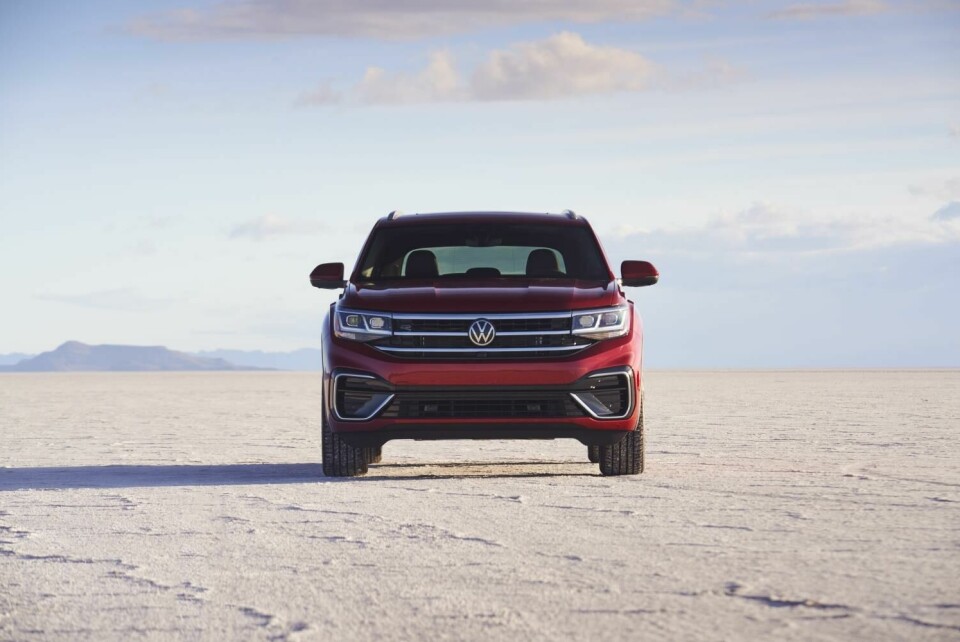
Design Review: Volkswagen Atlas Cross Sport
The large fastback SUV reflects American style and VW’s “friendly” design language
Flash fastback crossovers like the Lamborghini Urus and Audi Q8 get a lot of attention in the U.S. from enthusiasts and the press, but sometimes overlooked is Volkswagen’s platform-sharing sibling, the Atlas Cross Sport. This people’s version of the large SUV is the coupé-roofed variant of the Atlas, the second-best selling model in VW’s line-up in America after the midsized Tiguan. New to the market last year, the Atlas Cross Sport looks stylish on today’s roads and stands out from much of the high-riding, cargo-hauling American crowd.
“This is one of my favourite cars of our line-up because it has a very extraordinary proportion, especially the American version,” exterior designer Frank Josef Bruese tells CDN. “The Atlas and its twin, the Teramont in China, were really interesting for us to develop because we never had such a huge car before.”
Of course, it’s typical for brands to tweak each vehicle to suit different markets, but changes are often minor and dictated by varying safety regulations. In the case of the Atlas Cross Sport, however, Bruese says they were able to go above and beyond. “The Teramont has a nice proportion, but it’s like what you’d expect, and competitors are quite similar. What makes the American car special is the relation between the body to the cabin and the hood to the cabin. You have a long, upright, high-volume hood and a low, slim, short cabin, which gives power to the car and shows how strong it is. Together with the large wheel arches, it’s a very strong and powerful car but has a lot of movement. The rear windows are faster or more angled, which gives a bit of a punch to the front.”
Big companies with multiple brands such as VW Group have the advantage of cost savings and faster development times enabled by shared platforms, but designers also face the challenge of differentiating their products from their compatriots at the other end of the Autobahn. With the Atlas Cross Sport, although the proportions inherently give the vehicle a more dynamic look akin to the Audi Q8, Bruese says there is clear Wolfsburg DNA. “It’s not too aggressive, because Volkswagen is not the aggressive one. It’s a little bit more friendly. So, on the front end, for example, you can see a little bit more of a smiling face in it.”
With VW starting to roll out its aggressive plan for electrification, we will see how long ICE crossovers like the Atlas Cross Sport will continue to live on
Other hallmark design elements for VW include strong wheel arches and a strong D pillar, the latter of which is a nod to VW’s heritage that started with the Golf. “It gives a feeling of solidity, strength and safeness,” Bruese says.
The interior design also reflects the sportier characteristics of the Cross Sport while remaining distinctly Volkswagen. Two-tone colour schemes and stitching on the door panels accent an otherwise clean and streamlined cabin. Beneath the IP’s integrated touch screen, HVAC knobs and other buttons are simple and easy to use. If we had a pet peeve, it would be the giant gear shifter in the centre console, which seems a bit antiquated in the days when many manufacturers are going to low-profile shifters or locating them elsewhere such as on the steering wheel or higher up on the IP. Rear legroom and cargo space is ample (the Cross Sport has two rows instead of three like the standard Atlas), but as expected, headroom is slightly less due to the more sharply raked roofline. The Cross Sport is also slightly shorter.
With VW starting to roll out its aggressive plan for electrification, we will see how long ICE crossovers like the Atlas Cross Sport will continue to live on. But for now, Volkswagen has done a great job offering a sporty SUV at a relatively affordable price. And considering the Cross Sport made up 37 percent of all Atlas sales in the first quarter of this year, Americans seem to agree.



















